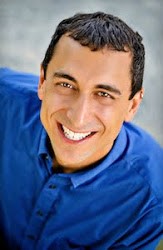 By David Soleil
By David Soleil
Imagine you are an 8-year old student in elementary school. Your teacher tells you, “Today, we are having a lockdown drill.” She talks in cryptic language explaining that if something bad happens at school, she wants everyone to be safe. You practice hiding in the closet with all of the other students and you sit “criss-cross applesauce” while the teacher bars the door. Or maybe you have a special cabinet to hide in. One of my friends told me how proud her daughter was about her hiding space in a cabinet for lockdown. This scenario plays out every day in our schools.
But what are we really teaching our community? We are teaching parents, teachers, and students to live in constant fear for their lives because “the shooter” is coming. Not since the Cold War have we surrounded our children in such an environment of reactive fear where they literally hide in the closet. “Duck and cover” used to be the rallying cry from Bert the Turtle for students to dive under their desks because Russia could drop an atomic bomb on the United States any minute.
School shootings are serious and complex issues. There is no single key that can unlock a solution for our communities. (Can we collectively be done with “silver bullets” please?) As a founder of a K-12 school myself, and a consultant in Nonviolence Leadership, I have some perspectives that could be helpful as schools and communities wrestle with how to address the potential threat of violence.
Build a Strong Community Around Caring and Love
Let’s back up, long before a shooter shows up anywhere, and ask, how is our community caring for each other? How are we taking time to validate the inherent worth and dignity of every person in our learning community? So often, we get caught up in our day-to-day jobs as teachers, parents and administrators that we forget about how important relationships are to our community. Strong communities are built upon trust, caring and love. These interpersonal relationships are your community safety net when issues come up and they take significant time and attention. It’s much like fundraising in the nonprofit world. The wisdom of fundraising says, “If you are going to ask for money one month each year, you must spend the other 11 months building relationships.” The same thing is true for community building. Invest time every day in building strong, caring relationships that will support the community in times of crisis. This strategy is not about “shooter management.” It is about “shooter prevention” long before anyone picks up a gun.
Open Communication Lines
Martin Luther King, Jr. said that “A riot is the language of the unheard.” I would say the same thing in this context, that school shootings are the language of the unheard. Many times, school shooters are also students. So let us be intentional that our schools can be “communities that hear.” Consider how your school community can open lines of communication. Let’s allow students to talk and allow them to feel. Let’s allow students to discuss what’s going on in our world without having to have a test, a homework assignment, a grade or a learning outcome. You can’t measure caring with a rubric and you won’t test your way to a safer school. We spend weeks preparing every student to take standardized tests. Can we give some attention to validating the humanity and feelings of each student? Even better, can we focus our time on building a loving community instead of so much testing? How many shootings could we prevent if students in despair felt their school was a place of caring rather than cold indifference? If we do not make time for this important work, we will continue to hear the tragic “language of the unheard.”
Arm Teachers with Empathy, Not Guns
Two years ago, Antoinette Tuff stopped a school shooter who carried an AK-47 and 500 rounds of ammunition in my hometown of Decatur, Georgia. She didn’t use a gun. She used much more powerful weapons: listening, empathy and love. No one was hurt. No one was killed, not even the perpetrator. Â She is a living example of the power of love, empathy and nonviolence.
What if we trained every teacher in empathic communication or Nonviolent Communication (NVC)? What if instead of lockdown drills, we had empathy drills? Instead of teaching students to hide in a closet, what if we taught our students and teachers to reach out to each other, every day, and help each other when people are sad or hurting? What if instead of living in reactive fear of death, that we engaged in the pro-active, life-affirming love of building a caring community?
The issues of school shootings are as complex as the solutions. Building a loving, caring community is an important solution that can catch students in despair and bring them back into the community long before they decide to pick up a gun.
Antoinette Tuff was a single unarmed person who stopped a tragedy with love. Imagine a whole school of people like Antoinette. We would never hide in the closet again.Φ
David Soleil, @davesoleil, syndicated by PeaceVoice, is the former Chair of the Leadership Education group for the International Leadership Association, a founder and staff member at the K-12 Sudbury School of Atlanta.
